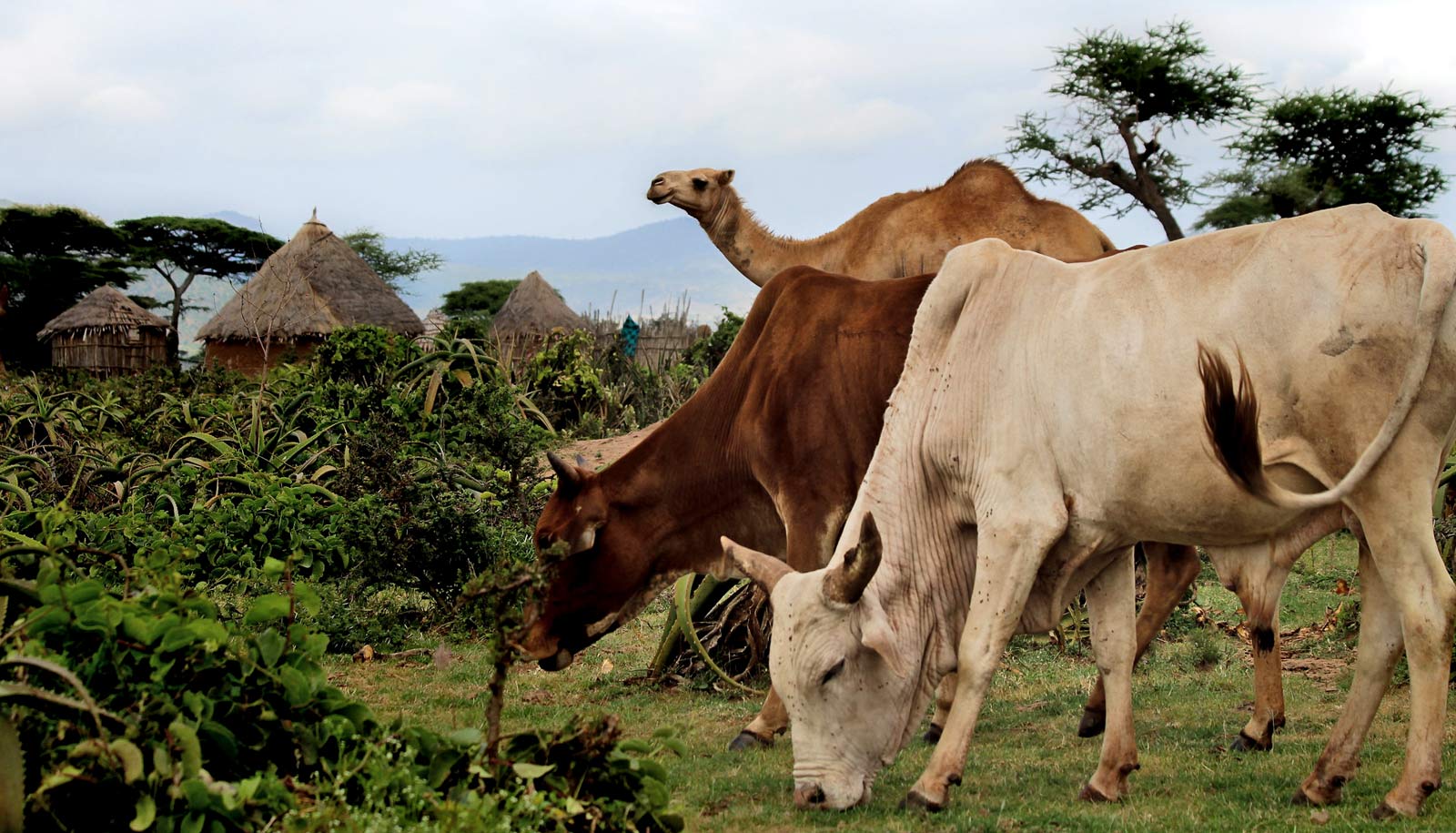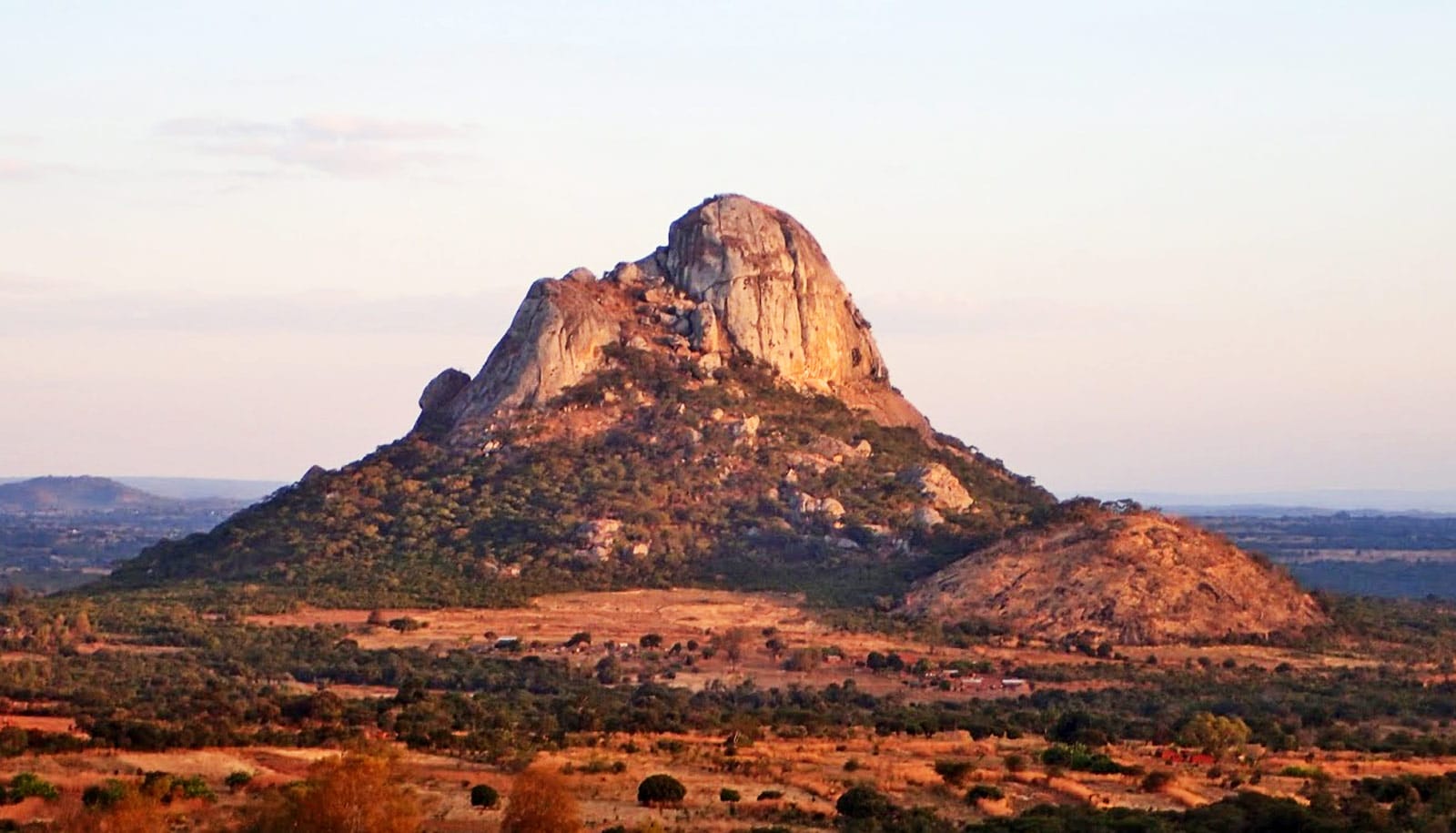New research clarifies food production in sub-Saharan Africa some 5,000 years ago, as well as how herding and farming spread through the continent in ancient times.
“The origins of food producers in East Africa have remained elusive because of gaps in the archaeological record,” explains Mary Prendergast, a co-first author and professor of anthropology at Saint Louis University in Madrid, Spain “Our study uses DNA to answer previously unsolvable questions about how people were moving and interacting.”
By way of an ancient DNA-based study of 41 human skeletons, the researchers reveal a multistep spread of the first herders into East Africa. Their findings appear in Science.
The research team analyzed genome-wide data from the skeletons, which come from East African archeological sites and are now at the National Museums of Kenya and Tanzania, and the Livingstone Museum in Zambia, and date to the Later Stone Age, Pastoral Neolithic, and Iron Age.
Herding of cattle, sheep, and goats was the first form of food production to spread through most of Africa. This way of life—known as pastoralism—continues to support millions of people in East Africa today. The new genetic results help to reveal the origins of pastoralism in this part of the world, and the circumstances that allowed herding, and later farming, to become prevalent.
“Today, East Africa is one of the most genetically, linguistically, and culturally diverse places in the world,” says bio-archaeologist Elizabeth Sawchuk, a co-first author of the paper and research assistant professor in the anthropology department at Stony Brook University. “Our findings from the DNA analysis of the skeletons trace the roots of this mosaic back several millennia. Distinct peoples have coexisted in the Rift Valley for a very long time.”
Early herding in the Rift Valley
Archaeological research from the East African Rift Valley shows this region played a significant role in the development of food producing societies and the transition from foraging to herding. Although livestock first appeared in northern Kenya around 5,000 years ago, archaeological data have not been able to paint a complete picture of when and how people and livestock spread farther south, and how distinctive herding societies developed.
The spread of food production involved multiple complex movements of people into East Africa at different times, which included the mixing of groups with ancestry derived from northeast Africa with local East African foragers. This admixture between herders and foragers diminished after around 4,000 years ago.
Their descendants diverged to form culturally diverse groups of Pastoral Neolithic herders in the Rift Valley, but continued to form a closely related genetic cluster over thousands of years. By 1,200 years ago, movement into the region of additional peoples from both northeastern and western Africa during the Iron Age, some of whom began farming, contributed to ancestry profiles similar to many groups living in East Africa today.
Genetic analysis also provides insight into the evolution of lactase persistence, the ability to digest milk into adulthood, in East Africa. Although this genetic adaptation is found in high proportions among Kenyan and Tanzanian pastoralists today, it was rare among these ancient herders, contrary to previous predictions.
Ethical research
Sawchuk and fellow researchers conclude that future archeological and ancient DNA research in the Turkana Basin, the Horn of Africa, and other parts of northeastern Africa will be necessary to confirm the earliest stages of the spread of herding into the region, and where the initial admixture between northeast African populations and East African foragers occurred.
The study involved a close collaboration among archeologists, geneticists, and museum curators to develop an advanced process for the DNA analysis. Sawchuk, an expert on the study of human remains, analyzed the bones of the individuals in this study. She and Prendergast also used the study to develop an ethical protocol for sampling human remains that they hope becomes the model for ancient DNA research in the future.
Funding came from the National Institutes of Health’s National Institute of General Medical Sciences, the National Science Foundation, the Howard Hughes Medical Institute, the Allen Discovery Center, John Templeton Foundation, and the Radcliffe Institute for Advanced Study.
Source: Stony Brook University



